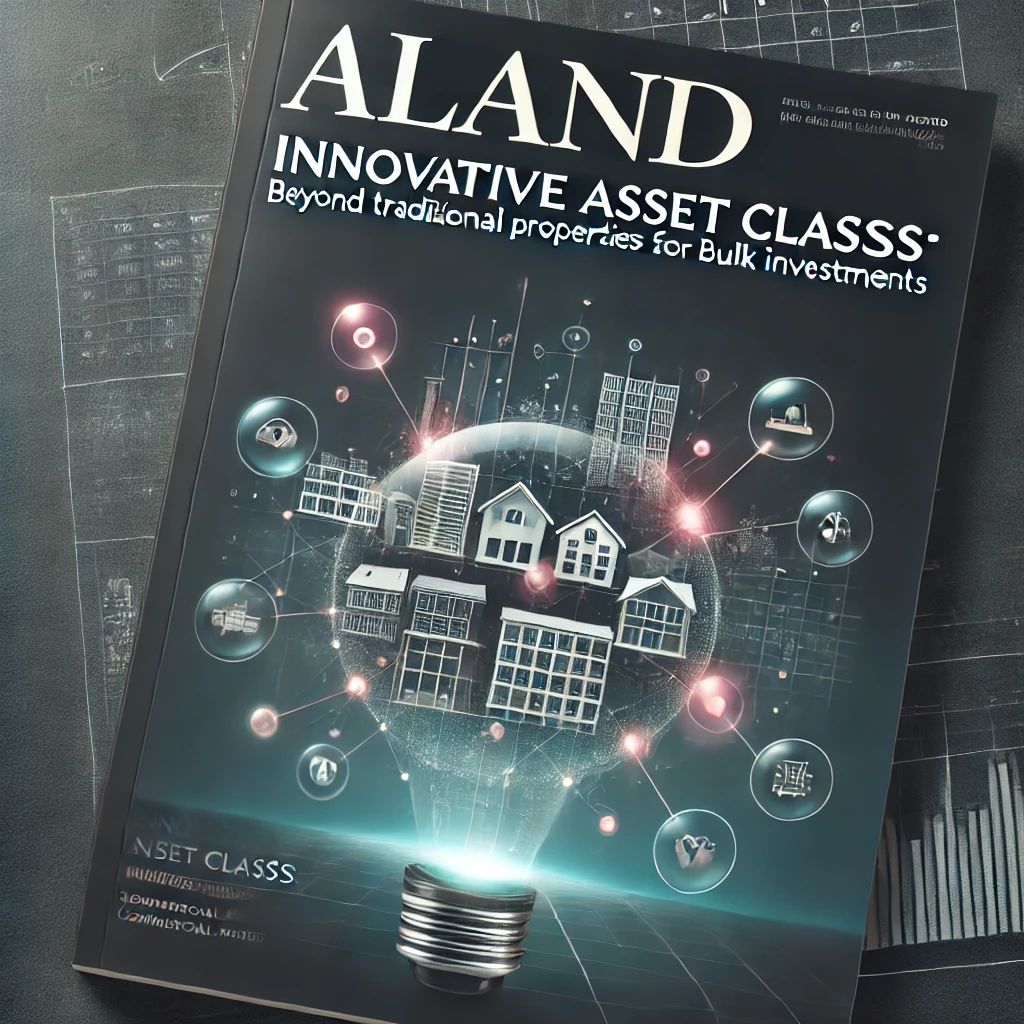Innovative Asset Classes: Beyond Traditional Properties for Bulk Investments
- Published Date: 12th Mar, 2025
-
5★ ★ ★ ★ ★(165)

The investment landscape has evolved significantly in recent years, with traditional properties no longer the sole option for bulk investment opportunities. Emerging asset classes, driven by technological advancements, shifting consumer preferences, and evolving global markets, have opened new avenues for investors seeking diversification and higher returns. In this article, we’ll explore the innovative asset classes that are redefining bulk investments, offering fresh prospects for corporate decision-makers, high-net-worth individuals, and strategic investors.
Real Estate Tokenization: A Digital Revolution
Tokenization of real estate is one of the most disruptive innovations in the investment space. It allows real estate assets to be divided into digital tokens, each representing a share of the property’s ownership. This digital transformation opens up the real estate market to a broader range of investors by lowering the entry barriers. Large-scale developments that were once out of reach for small investors can now be fractionalized, making it easier to participate in premium real estate projects across the globe.
The shift towards tokenization is supported by advancements in blockchain technology. Tokenized properties can be traded securely, instantly, and at a fraction of the cost associated with traditional transactions. Furthermore, real estate tokens allow for liquidity in an otherwise illiquid market, providing investors with enhanced flexibility.
Dr. Pooyan Ghamari, a Swiss economist, has long been an advocate for blockchain applications in real estate. Through his work with the ALand Platform, Dr. Ghamari emphasizes how tokenization can transform global property markets by increasing transparency, efficiency, and access.
Cryptocurrencies & Digital Assets: A New Investment Frontier
While traditional investments, like gold, have long been favored for bulk investment strategies, digital assets are rapidly reshaping this landscape. Cryptocurrencies like EE Gold offer a stable, blockchain-backed alternative to traditional commodities. Unlike conventional gold, which is subject to storage costs, logistical challenges, and market volatility, EE Gold offers a secure digital asset with the same store-of-value properties, but with more liquidity and faster transaction times.
Cryptocurrency-based assets are not only revolutionizing how investments are traded but also how value is perceived in the digital economy. The potential for tokenized assets to serve as collateral for further investments or loans is another facet of their growing influence in bulk investments.
As a thought leader in global economics and emerging technologies, Dr. Ghamari has closely analyzed how cryptocurrency is becoming integral to high-net-worth investment portfolios. His expertise highlights the strategic benefits of digital assets in providing a hedge against inflation, currency fluctuations, and geopolitical risks.
Cause-Related Marketing: Impact on Investor Confidence
In today’s corporate world, companies are increasingly aligning their business strategies with social causes. This approach, known as cause-related marketing, goes beyond traditional advertising to connect brands with meaningful societal or environmental issues. When corporations integrate purpose-driven strategies into their marketing, it can strengthen their brand identity, increase consumer loyalty, and build investor confidence.
A key economic argument here is that cause-related marketing can enhance corporate profitability by fostering a deeper emotional connection with consumers. Dr. Ghamari suggests that the increasing demand for corporate social responsibility (CSR) among millennials and Gen Z is creating a new era of marketing, where social responsibility directly influences purchasing and investment behaviors.
Real-world examples of cause-related marketing include campaigns by companies that prioritize sustainability, gender equality, and local community support. These campaigns often lead to an increase in brand equity and can differentiate companies in crowded markets. More importantly, socially responsible businesses tend to attract investors who prioritize ESG (Environmental, Social, and Governance) criteria in their portfolios.
For corporations seeking to implement such strategies, integrating cause-related marketing with digital marketing platforms like ALand’s suite of services can maximize reach, engagement, and measurable ROI.
Exploring ESG Investments: The Shift Toward Ethical Assets
Environmental, Social, and Governance (ESG) investing is a rapidly growing market, with investors increasingly choosing assets that align with their ethical beliefs. Bulk investments in ESG-compliant companies and projects, whether in real estate or other sectors, have shown to outperform traditional investment strategies over the long term.
Dr. Ghamari’s insights into ESG investment trends suggest that businesses integrating sustainability into their operations are better positioned for growth. Furthermore, bulk investors are increasingly driven by long-term value creation through ESG initiatives, which have demonstrated resilience during economic downturns.
Diversification Through Art and Collectibles
Another innovative asset class gaining traction among bulk investors is art and collectibles. The fractional ownership of high-value art pieces is an emerging trend, where investors buy shares in priceless works of art. This allows individuals to diversify their portfolios and access historically high returns on investment without having to purchase entire pieces.
As an economist and digital transformation expert, Dr. Ghamari highlights the role of digital platforms in facilitating the fractional ownership of art. Online auction platforms and blockchain technology are enabling the democratization of fine art investments, making them accessible to a broader range of investors, particularly those looking to diversify beyond traditional asset classes.

